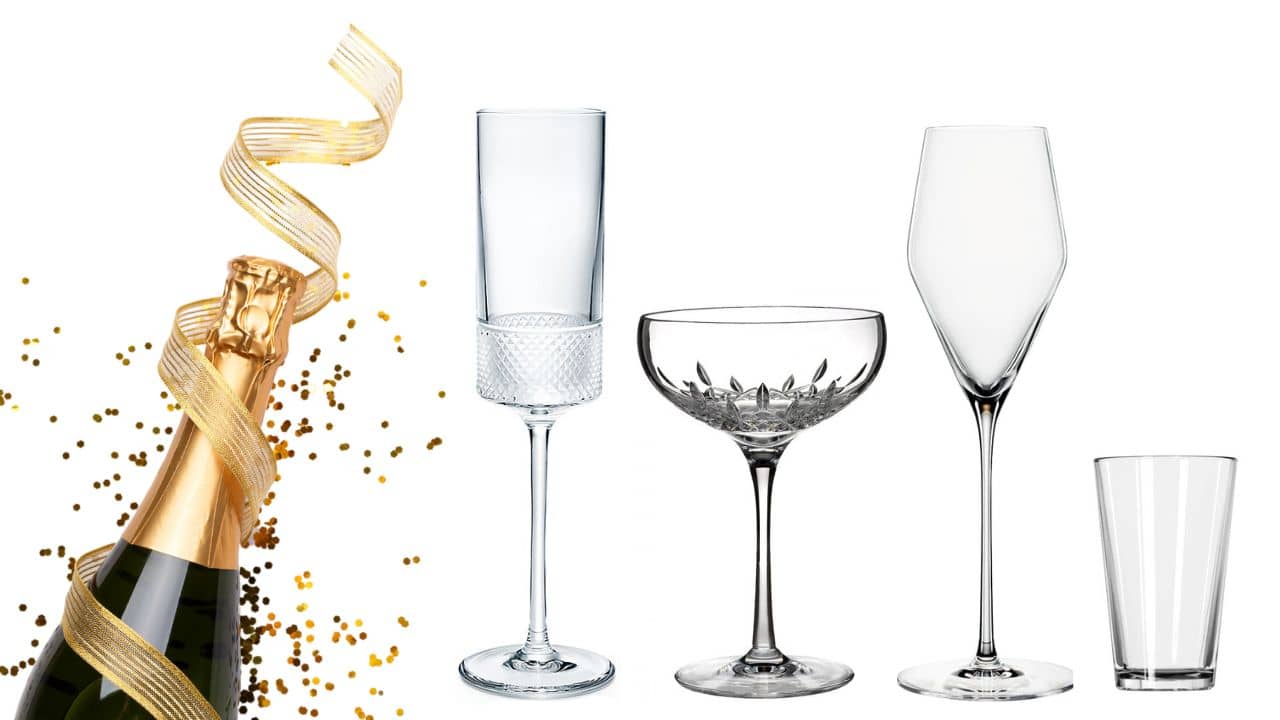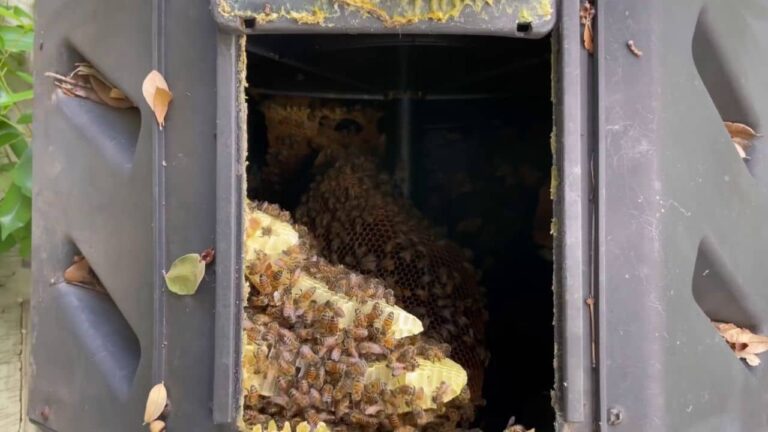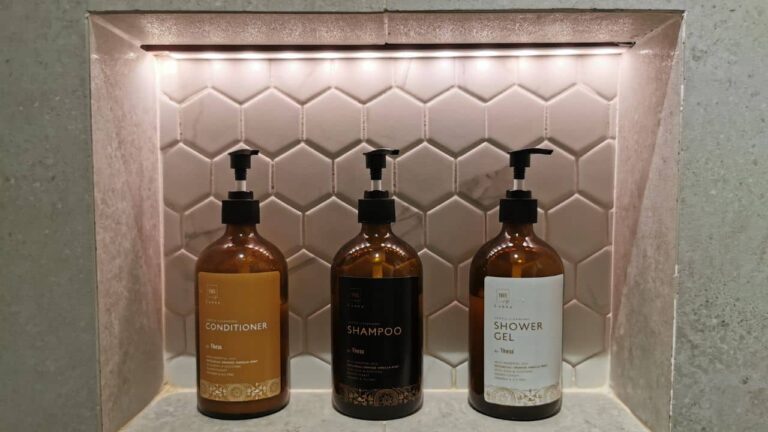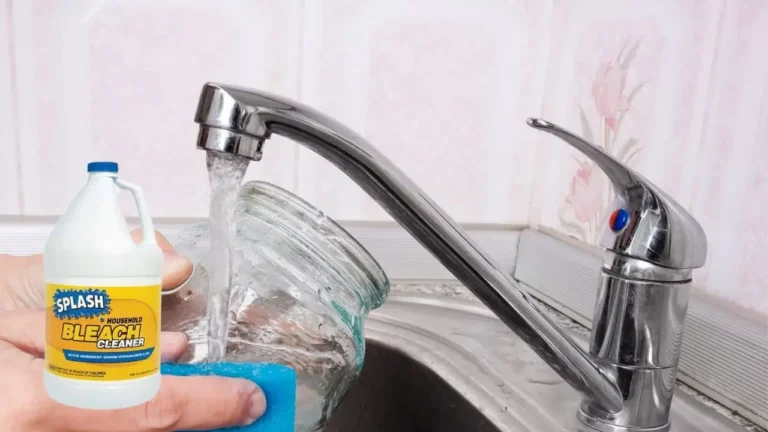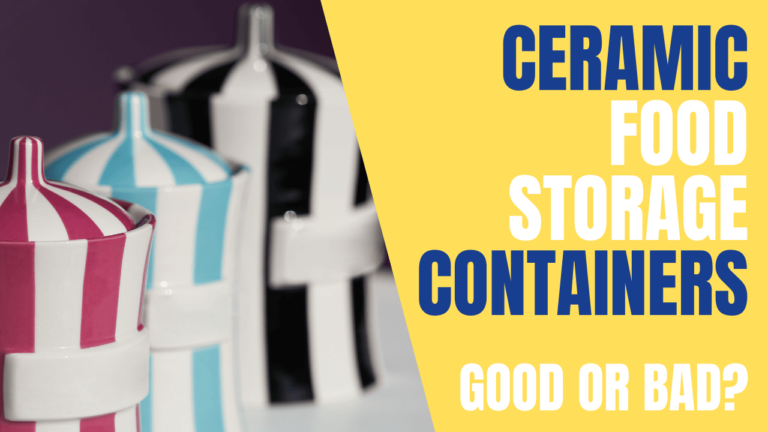The 4 Types of Champagne Glasses, Including the One You Didn’t Know About
You’ve probably already asked yourself: what’s the best shape for a champagne glass?
I have a surprise in store: there’s only one type of champagne glass that you should use to fully appreciate this top-class beverage.
Don’t believe me? Then let me introduce you to the four types of champagne glasses that exist—each with its own advantages and disadvantages.
Whether you’re a champagne lover or just curious about how to improve your tasting experience, this article will help you learn a lot more about the topic. I’m sure it will!
In general, this will help you avoid mistakes when choosing a champagne glass. You’ll learn everything you need to know.
Cheers, and Here’s to Champagne! A Look at the Various Glassware Options
When it comes to drinking champagne, most people aren’t aware just how much the choice of glass can influence the tasting experience!
Indeed, this symbol of luxury and celebration should not be tasted anyhow. Don’t take that from me—take it from the purists and experts of the Champagne region in France.
Without further ado, let’s start with the only type of glass that allows you to taste and appreciate champagne at its true value.
#1 The “Tulip” Wine Glass: nicknamed for its flower-like shape
This is the ideal container for drinking champagne according to professionals and true connoisseurs.
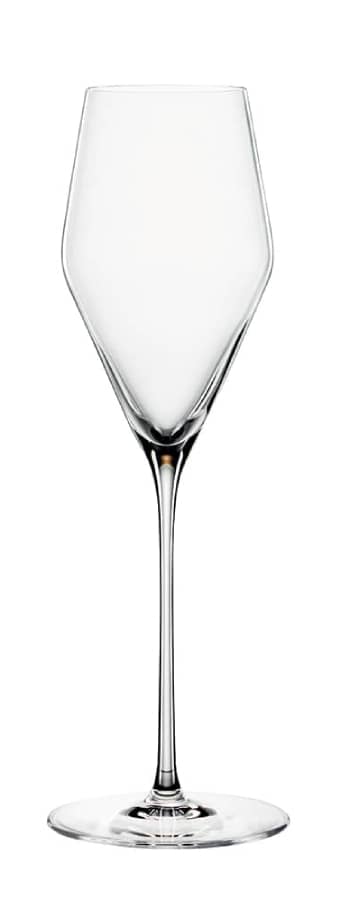
The tulip-shaped glass offers a very good balance thanks to the width of its base. This allows the champagne to express itself properly without being too cramped as it would be in a flute.
Also, the narrow shape of the top of the glass prevents bubbles from escaping too quickly, allowing for better oxygenation.
Without a doubt, this is the best choice for tasting the best vintages.
Good to know
The flared shape of the tulip glass invites the nose all the while it concentrates the wine’s aromas. It also allows for better retention of the champagne bubbles while making them finer.
Its Advantages
- It allows the wine to express all its aromatic qualities.
- It allows fine bubbles to appear on the surface and rise to the rim.
- It’s both aesthetically elegant and pleasing.
- It can be used to taste other wines and even spirits.
Its Disadvantages
- Its shape makes it more difficult to clean than a flute or a glass.
- Depending on the brand, the tulip glass can be more expensive.
#2 The Champagne Flute
With its long, slender shape, the champagne flute was once considered the ideal choice for enjoying champagne.

For a long time considered as a sure value, this historical glass is nowadays questioned and now used less often—probably because its elongated shape brings a flow of bubbles that just tickles the nose and masks the delightful aroma.
It’s important to know that the champagne flute compresses, confines, and “restricts” the champagne. This has the effect of masking the crisp freshness of the scent.
If I had to use a metaphor to describe the place of champagne in a flute, it’s like being asked to slam dance in tight jeans!
Good to know
When pouring champagne into a flute, the CO2 (carbon dioxide) is concentrated. The effervescence of the champagne will thus disturb the tasting and the perception of the aromas.
Its Advantages
- It has a small diameter: this prevents the gas from being released too quickly (rapid loss of bubbles).
- The length of its foot keeps the champagne away from the hand and keeps it cool.
Its Disadvantages
- As it is a thin and long glass, the bubbles have difficulty to express themselves and to release their aromas.
- The longer the flute glass, the further the champagne bubbles travel to reach the surface. As a result, the bubbles grow larger and cause a less pleasant visual and gustatory effect. It is important to know that fine bubbles are essential for optimal appreciation of the champagne.
- The flute tends to be too full. This also inhibits most of the champagne’s aromas.
#3 The Champagne Coupe
The champagne coupe, because of its size and rounded shape, does not have the necessary characteristics to highlight the qualities of a champagne.
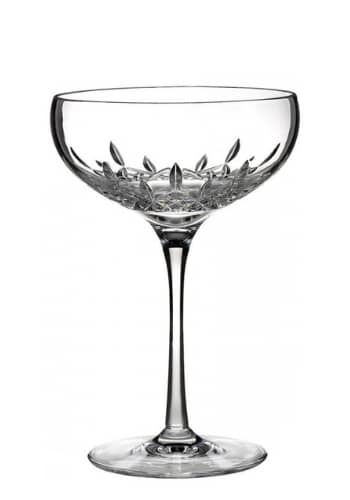
Unlike the flute or tulip glass, the traditional wine glass has a larger opening. This large opening is the biggest drawback.
As the contact surface between the champagne and the glass is very large, the quantity of bubbles quickly diminishes!
The small depth and the large width of the champagne coupe cause the bubbles to quickly disappear and the aroma to disperse. The latter exits in all directions from the moment the champagne is poured.
Good to know
Tasting champagne (just like any other wine, which champagne is) starts with the nose. This is where you discover the aromas. As the coupe is very wide and open, it does not concentrate the aromas. As a result, the aromas are dispersed even before we bring our glass to the nose. The perception of the wine’s aromas is thus rather weak.
As for any froth or foam, with this type of glass, this will indeed be a rare phenomenon!
Believe me, the coupe is not at all the ideal glass for a great champagne tasting experience.
Its Advantages
- This type of glass is elegant and even classy.
- This is the only glass that allows you to create a “champagne fountain.”
Its Disadvantages
- The bubbles quickly disappear.
- It’s impossible to properly appreciate the aromas.
- The champagne can easily spill.
#4 The “blida”
I’m pretty sure you haven’t heard of this glass. And yet, it does exist—and is even the emblematic glass of the Champagne region in France!

The funny thing is that it is not really suited for champagne, either: it’s too small and too open. Therefore, it’s not the best type of glass to use to enjoy the bubbles and aromas of your favorite champagne.
Some professionals also find it suitable for serving champagne, but they’re few and far between.
“The blida allows the effervescence to develop in a glass
Emilien Erard, oenologist and head of winery and bottling at Piper Heidsieck.
that is neither very wide nor sufficiently high.”
So, why does this glass exist, and where does it come from?
In the past, this small glass made in Reims was used as a tea glass in Algeria, mainly for mint tea. Thereafter, its use was diverted for drinking champagne, but only in the Champagne region of France.
But why this strange name, and why is it still used only in the Champagne region today?
Originally, the glass factories located in the vicinity of Reims manufactured these small tea glasses, which they exported to Algeria through the city of Blida. It was at the time of the French Algeria.
Little by little, orders of tea glasses exported towards the city of Blida gave birth to the “blida” glass.
Then, during the decolonization, the market collapsed and the unsold production of the “blidas” got stuck in Reims. That’s why winemakers decided to continue using it so as not to waste the huge remaining stocks.
If you decide to stop by the beautiful Champagne region in France, don’t be surprised to see this type of glass used for grape harvest, receptions, weddings, or graduations. Because it is the emblematic glass of the Champagne region!
Its Advantages
- The blida is small, stackable, and easy to store—the ideal glass to take up the least space in a picnic basket.
- It’s much less fragile than other glasses.
- It is easier to maintain.
Its Disadvantages
- Although it is of Champagne origin, it is not at all adapted to the tasting of Champagne.
- It is not elegant: it looks more like a shot glass.
Conclusion
In conclusion, the choice of champagne glass can have a significant impact on your tasting experience. Assume that when you taste champagne, the container is just as important as the content.
What makes a good champagne glass is a marriage between a slightly large body and a narrower drinker. So much so that with this type of glass, the aromas are carried by the carbon dioxide and are tightened at the height of your nose.
The result? You fully enjoy the amplified perception of the wine’s aromas.
Here’s a picture to help you better understand the different parts of a wine glass.

In short, when drinking champagne, choose tulip-shaped glasses when possible and other wine glasses that resemble them as an alternative.
Feel free to share your experience on the subject in the comments, and don’t miss the opportunity to discover one of the best champagne bottle stopper I use.
“Cheers, and to your health,” as we always say in France!

